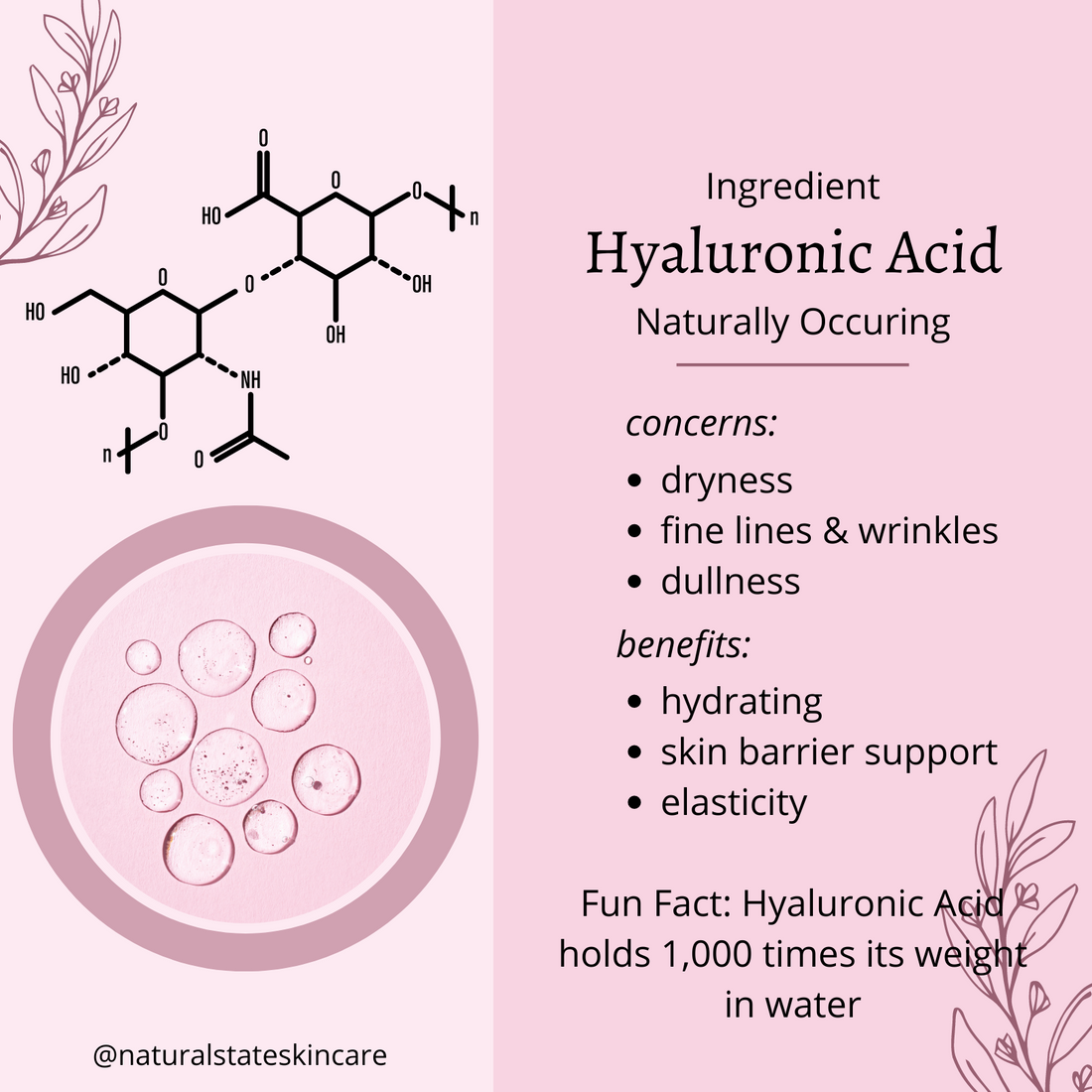
Ingredient Spotlight: Hyaluronic Acid (HA)
Share
Hydrating. Plumping. Hyaluronic Acid is the ingredient skin loves when it craves moisture! Our bodies naturally make hyaluronic acid for those areas where moisture is needed (i.e. eyes) and thankfully for those of us that may need an added boost, we can supplement by using topical products - like lotions and serums.
How much of a boost could your skin receive?
The potential for skin to increase hydration is up to 96% per a 2014 study [1], after 8 weeks of use. So, adding a serum to your daily routine offers a huge moisture benefit for your skin. You may also witness a plumping benefit that can help smooth texture, decrease lines, and improve elasticity.
How to add to your skincare routine.
Products that include HA are my full line of serums. All of my serums offer HA as a boost to further elevate the start ingredient within that particular serum. Of course, my Hyaluronic Acid Serum carries a larger percentage of HA than my other serums as it is its star! My Hyaluronic Acid Serum carries three levels of HA - a blend of low, medium and high molecular weight.
I’m adding HA to more products as I elevate my formulations. You will soon see it as part of our toners and moisturizers.
--------------------------------------------------
Fun Fact: Hyaluronic Acid holds up to 1,000 times its weight in water.
- Jegasothy SM, Zabolotniaia V, Bielfeldt S. Efficacy of a New Topical Nano-hyaluronic Acid in Humans. J Clin Aesthet Dermatol. 2014 Mar;7(3):27-9. PMID: 24688623; PMCID: PMC3970829. https://www.ncbi.nlm.nih.gov/pmc/articles/PMC3970829/
- Magnesium Health Fact Sheet, National Institute of Health, https://ods.od.nih.gov/factsheets/Magnesium-HealthProfessional/
- Al Alawi AM, Majoni SW, Falhammar H. Magnesium and Human Health: Perspectives and Research Directions. Int J Endocrinol. 2018 Apr 16;2018:9041694. doi: 10.1155/2018/9041694. PMID: 29849626; PMCID: PMC5926493. https://www.ncbi.nlm.nih.gov/pmc/articles/PMC5926493/
- Gupta RC, Lall R, Srivastava A, Sinha A. Hyaluronic Acid: Molecular Mechanisms and Therapeutic Trajectory. Front Vet Sci. 2019 Jun 25;6:192. doi: 10.3389/fvets.2019.00192. PMID: 31294035; PMCID: PMC6603175. https://www.ncbi.nlm.nih.gov/pmc/articles/PMC6603175/
